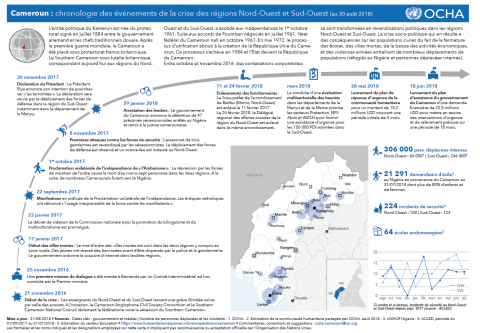Highlights
Three (03) staff members of Plan International, a UNHCR partner, were kidnapped by non-State armed groups (NSAG) fighters while they were distributing core relief items in Bamenda town during which a UNHCR vehicle on loan to the partner was taken away by the separatists, the general security situation in the North-West and South-West regions during the reporting month continued to indicate that the humanitarian space is further shrinking. In addition to the extensive use of improvised explosive devices (IEDs) by NSAG against Government Security and Defense Forces (GDSF), the killing of civilians, burning down of houses, abductions for ransoms and carjacking, some separatist fighters are now using more deadly weapons, including Rocket Propelled Grenades (RPGs) which will potentially worsen the conflict and the already dire humanitarian situation.
During the reporting period, an estimated 1,525 individuals (256 households) were forced to flee Barnum II in Menchum valley subdivision (Menchum division) to Benakuma in Menchum valley sub-division (Menchum division) and in Akwaya sub-division (Manyu division) and Balikumbat sub-division (Ngo-Ketunjia division) to Bafanji (Bangang I neighbourhood) in Balikumbat sub-division (NgoKetunjia division) because of ongoing violence. The majority fled by foot and have found shelter in sub-standard buildings. The majority fled by foot and have found shelter in public non-damaged buildings. Those displaced by flood intend to return only after the rainy season, unless the administration finds a preventive solution, while those displaced by violence intend to return to their locations of origin once calm return.




